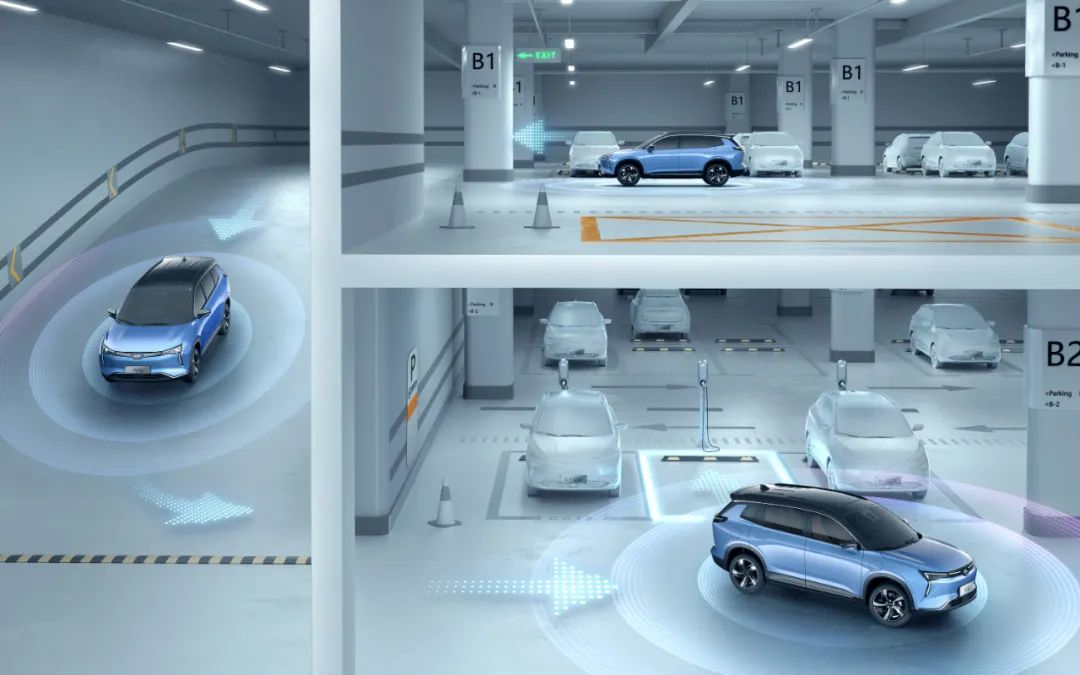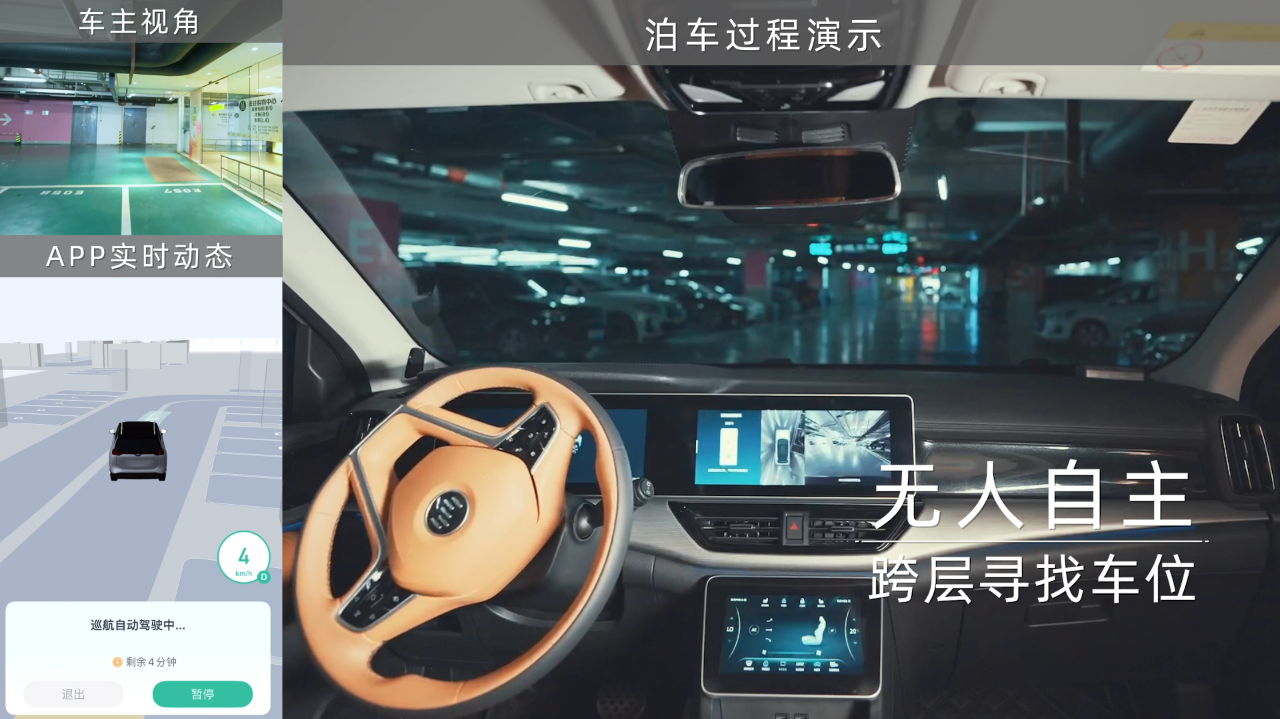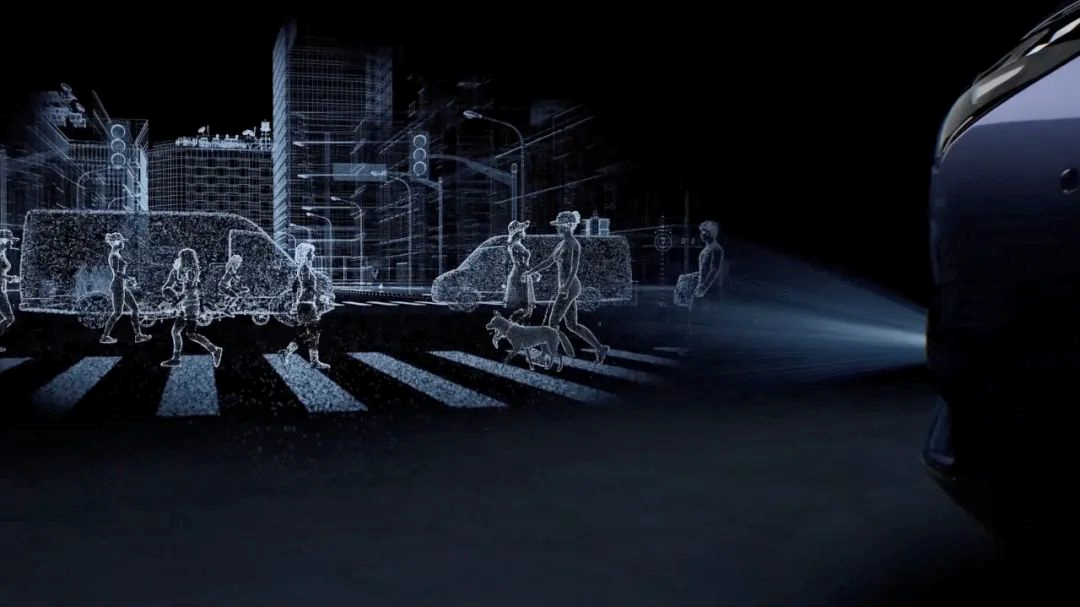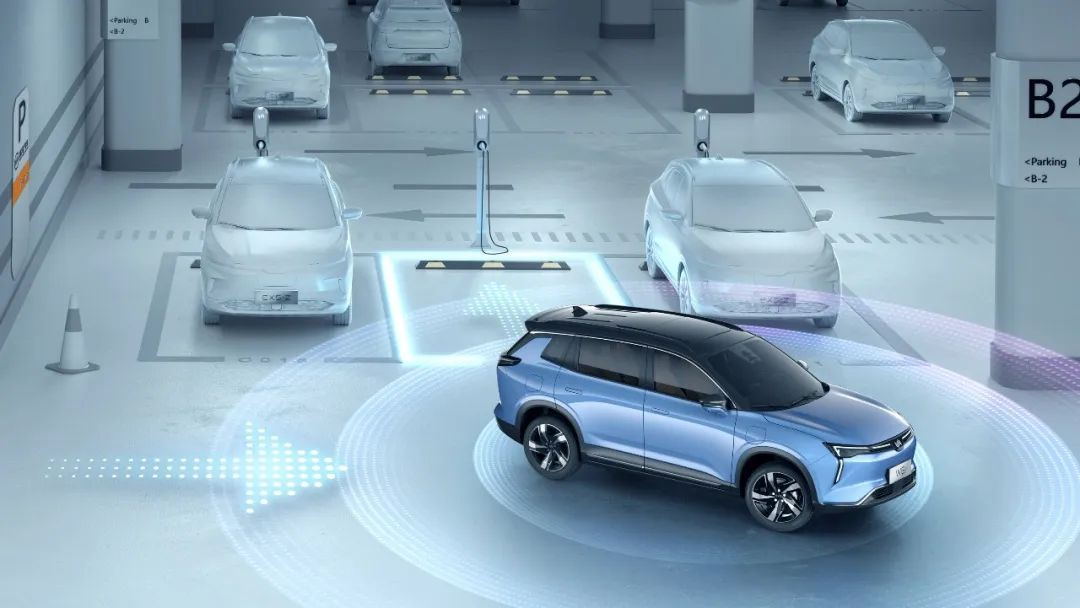Autonomous parking in parking lots is becoming a reality
By CH_Han
Yesterday, we posted an article about the enhanced driving assistance system on XPeng vehicles. One netizen commented: “First, make the cost of automatic parking down to 10,000 yuan per car. Then we can get out of the car and go shopping when we park in a mall. That’s the real deal.” This comment is quite to the point. Currently, the development of driving assistance systems is not only happening on public roads, but also in underground parking lots. However, the former has received more attention and participation, while the latter has progressed slowly over the years despite starting early.
On public roads, driving assistance and automatic parking assistance in parking lots are two mainstream subdivisions of the autonomous driving industry. They face different specific problems, but there is overlap in their requirements for vehicle perception, decision-making, and execution capabilities.
Today, the rapid development of driving assistance systems on public roads has also led to continuous improvements in automatic parking capabilities in parking lots. Moreover, it is relatively “easy” to achieve fully autonomous or unmanned driving in low-speed parking lot environments.
Broad prospects for mediocre configuration
Note that the term “easy” here is in quotation marks since it is actually still quite difficult, but it is just easier than achieving autonomous driving on public roads.
Just how difficult is it? Looking back at the development history of automatic parking, we can see that letting a car park itself is not as simple as we imagine.
As early as 1989, Volkswagen demonstrated automatic parking technology on their IRVW Futura concept car, where the driver could get out of the car and watch the car complete the automatic parking process. In the early 2000s, automatic parking capabilities began to appear on high-end car models, and in the 2010s, automatic parking became popular, appearing on high-end models of mid-to-low-end cars as well.
However, even today, if we were to conduct a poll for “the most mediocre configuration on a car,” I believe that automatic parking would still rank in the top three.
Apart from a few manufacturers who have achieved higher-level automatic parking capabilities, most car models equipped with automatic parking can only complete the final step of parking the car into a designated parking space.Due to the limitations of vehicle perception and execution capabilities, drivers still need to sit in the car all the time. However, the automatic parking assist (APA) feature installed in most car models often fails to handle difficult parking spots or even simple ones as fast as a person, making it unnecessary to use. What’s worse, many APA functions retire users from the very first step of searching for a parking space, which lacks usability.
The inability to function correctly, low efficiency, and inconvenient usability are the common problems most car models have with their APA features. The development of automatic parking has been stuck in this predicament for many years and has even fallen into a deadlock. As manufacturers could not properly develop it, users did not need it, which did little to sell cars. Thus, manufacturers had no motivation to improve it. This once-promising feature has become lackluster and a waste.
However, with the development of automobile intelligence in recent years, automatic parking has once again caught the attention of automobile manufacturers. Early adopters of automatic parking (APA) such as XPeng Motors and Huawei AITO have improved the capability and usability of their APA functions, finally breaking the deadlock.
By relying on stronger perception capabilities, XPeng vehicles equipped with automatic parking can instantly display nearby parking spaces when switching to reverse gear, eliminating the need to search for a parking space. Simply select the desired parking space, and automatic parking will take care of the rest. The parking efficiency and ability to handle complex situations are close to that of an ordinary driver, but it still cannot handle difficult parking spaces. Although it allows drivers to briefly relax, the usability improvement is not as apparent.
Nowadays, more and more people sense the Remote Park Assist (RPA), which allows drivers to use mobile phones or keys to remotely park their car in a parking space, has become increasingly popular. This feature is generally used to cope with narrow parking spaces, and its usability improvement is apparent when needed. However, the usage scenario is relatively single and can often be avoided.
Going further in the direction of high-end features is memory parking, which begins to cover more parking processes. It can autonomously drive to a specified parking space in the parking lot and park there automatically. Memory parking reopens our imagination for the future development of automatic parking. However, it still has strong limitations, not only requiring a prior learning of the route but also more suited for use in fixed parking spaces in residential or company areas. Furthermore, it still requires the supervision of the driver when parking, and the improvement of usability is still not significant.## Is there no better solution?

While the parking lot environment is simpler than public roads and the speed is much lower, making it safer, there are still unique problems that need to be solved for autonomous driving in parking lots. These include more obstacles such as parked cars, poles, and cones, as well as metal objects like pipes and fire hydrants on the parking lot ceiling that interfere with millimeter-wave radar perception. The dim lighting in some parking lots also poses a challenge to visual perception, among others.
However, with the synchronous improvement of hardware and software capabilities of intelligent vehicles for autonomous driving in recent years, higher-level automatic parking solutions that can handle these problems have also begun to emerge.
Last week, WM Motor released its “Public Autonomous Valet Parking” (PAVP) technology, which allows its vehicles to park themselves remotely in public parking lots without the need for driver instruction. This means that their new W6 model can self-park in a public parking lot, without any human intervention, leaving passengers free to shop.
The PAVP technology is a deep collaboration between WM Motor and Baidu. The so-called “Map End” refers to the high-precision parking lot map provided by Baidu, which can achieve accurate positioning up to 15cm and support cross-layer recognition with a memory footprint of less than 10MB. The “Cloud End” refers to both Baidu Cloud and WM Cloud, which act as navigators and can deliver maps, parking lot information, and vehicle dispatch.
 “Field terminal” refers to the coating renovation of a parking lot, including the renovation of lanes and parking spaces, as well as the addition of identification signs. “Vehicle terminal” refers to the software and hardware capabilities of the WM W6 itself, which serves as a virtual driver, including two high-definition front cameras, four high-definition surround cameras, 12 ultrasonic radars, five millimeter-wave radars, and an automatic driving calculation platform developed in cooperation with Baidu. The mobile terminal is the user’s interactive platform, acting as a command center, allowing users to issue parking instructions and monitor the parking process at any time.
“Field terminal” refers to the coating renovation of a parking lot, including the renovation of lanes and parking spaces, as well as the addition of identification signs. “Vehicle terminal” refers to the software and hardware capabilities of the WM W6 itself, which serves as a virtual driver, including two high-definition front cameras, four high-definition surround cameras, 12 ultrasonic radars, five millimeter-wave radars, and an automatic driving calculation platform developed in cooperation with Baidu. The mobile terminal is the user’s interactive platform, acting as a command center, allowing users to issue parking instructions and monitor the parking process at any time.
WM’s PAVP has three major characteristics: “no human operation”, “no learning required”, and “infinite distance”. It also has the ability to cross floors, actively avoid obstacles, stop/avoid pedestrians, and contact ground crew/mobile terminals in case of inability to pass.
From WM’s official demo video, it can be seen that this time it has truly achieved unmanned driving. After the user gets off at the designated location and issues a parking instruction, the vehicle will be parked in the parking space already set in the high-precision map. To retrieve the car, simply reverse the process. However, at the regulatory level, unmanned driving in parking lots is still in a gray area. Previously, WM claimed to be responsible for any safety issues during the memory parking process. It is unknown whether this is also the case with the PAVP function.
In actual use, the current implementation of this feature is limited by the coverage range of high-precision maps and the renovation of parking lots. The PAVP function can only be smoothly used if there is a high-precision map coverage and the parking lot is renovated according to the requirements, in other words, it requires cooperation between the parking lot, Baidu or WM.
However, WM and Baidu’s innovation this time lies in the significant decrease in the difficulty and cost of parking lot renovation, which only requires a coating renovation and the addition of a small number of signs. Unlike the traditional solution demonstrated by Audi and Mercedes-Benz that requires expensive cameras and lidar to be installed in parking lots.
Furthermore, WM will provide users at cooperative parking lots with exclusive free parking spaces and high-precision map and route downloads with free data usage. As long as the business model is established, promotion will not be as difficult.
At least 30 years ago, we began to imagine the prospect of fully automatic parking, where people get off and the car parks itself, a scene that has appeared countless times in car manufacturers’ foresight promotional videos. But until today, the dream has only begun to become a reality.
Entering a rapid development stage
At least 30 years ago, we began to imagine the prospect of fully automatic parking, where people get off and the car parks itself, a scene that has appeared countless times in car manufacturers’ foresight promotional videos. But until today, the dream has only begun to become a reality.The PAVP function of WM W6 will soon be pushed to users via OTA, completing the “full family of automated parking”: 360° panoramic image + Automated Park Assist (APA) + Remote Park Assist (RPA) + Home Automated Valet Parking (HAVP) + Public Automated Valet Parking (PAVP), all of which will be equipped on production vehicles.

With the rapid popularity of onboard LiDARs, the ability of vehicle imaging will be greatly improved, and automated parking is entering a fast development stage. Once regulations are perfected and crowdsourced maps are opened, automated parking in parking lots will have more practical scenarios. It may still be difficult technologically for cars to park themselves, but it is gradually becoming a reality that the general public can enjoy.
In the next generation of our lives, driving and parking may be what machines should do.
Of course, this is excluding the joy of driving.
This article is a translation by ChatGPT of a Chinese report from 42HOW. If you have any questions about it, please email bd@42how.com.
